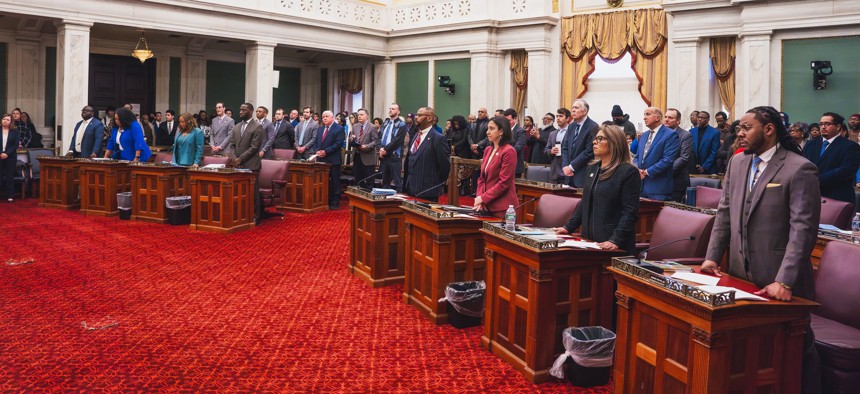Philadelphia
Gains in Philadelphia’s female representation still lag behind other cities
A Pew analysis found that Philadelphia City Council ranks ninth among 15 cities surveyed for their percentage of women lawmakers

Philadelphia City Council stated meeting on Feb. 2, 2024 Philadelphia City Council
Philadelphia City Councilmembers are more tenured and better compensated than most of their counterparts, but female representation in City Hall is relatively low, according to a new analysis by The Pew Charitable Trusts.
Despite major turnover and leadership changes in Philadelphia City Council in the past year, including the addition of new female members Rue Landau and Nina Ahmad, the city ranks ninth among 15 major cities in female representation.
“In 2024, six of the 15 city councils that we looked at had majority-female representation on them, whereas the last time we looked at city councils in 2016, it was zero,” Katie Martin, project director of Pew’s Philadelphia Research and Policy Initiative, told City & State.
The analysis, which examined representation, tenure and salaries of the members of the largest such legislative bodies in the nation, found that the overall share of female council members among the cities reviewed increased from 31% in 2016 to 47% in 2024.
Philadelphia’s gains among female members lagged behind other cities, however, as the percentage of women members increased from 35% in 2016 to 41% in 2024 – resulting in the City of Brotherly Love and Sisterly Affection falling from fifth to ninth in the rankings.
Landau, an at-large councilmember and the first LGBTQ+ member to be elected to Philadelphia City Council, said in a statement: “Especially after the Dobbs decision, it is more important than ever to have women in leadership positions because we need to be the ones making decisions about our freedoms."
Ahmad added that many issues need “to be addressed to offer ample support for women who wish to seek elected office.”
“While this data on the increase in female representation in the legislative bodies of 15 major U.S. cities is encouraging, we know there is still more work to do,” Ahmad said in a statement. “We are proof of what’s possible when our young people – especially our girls – consider their aspirations and goals. Let’s make sure they have as clear a picture as possible that will continue to motivate them to exceed their own expectations.”
Major turnover occurred within council and leadership throughout the mayoral campaign last year, with longtime lawmakers Darrell Clarke, Allan Domb, Derek Green, Helen Gym and Maria Quiñones-Sánchez retiring or leaving their seats.
Even with the drastic changes within the council, the combination of having no term limits in place and having lawmakers like Councilmember Brian O’Neill – who is serving his 11th four-year term – has made Philadelphia one of the most tenured councils in the country.
Philadelphia ranked third, behind Washington, D.C. and Chicago, in terms of the average length of tenure for a city councilmember, with an average of 6.9 years – more than two years longer than the overall average of 4.7 years.
“In 2011, when we first looked at this, Philadelphia had the longest average tenure at 15.5 years,” Martin told City & State. “That’s down to 6.9 – a fairly dramatic decrease (because) more than half of the members on City Council today have not actually served a whole term yet.”
Tenure and female representation aren’t the only numbers showing recent spikes, however. Among the 15 cities reviewed, council salaries have increased by an average of 27% since 2016. Philadelphia, with an average councilmember salary of $159,000, ranked fourth among the cities surveyed.
That dollar figure is also a 20% increase from what the city’s lawmakers made in 2016.